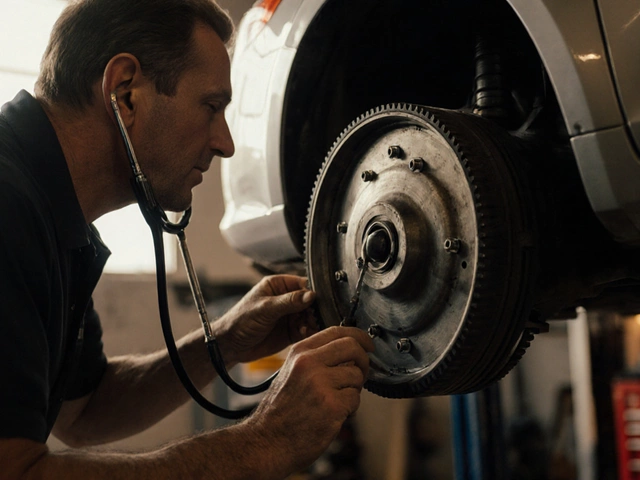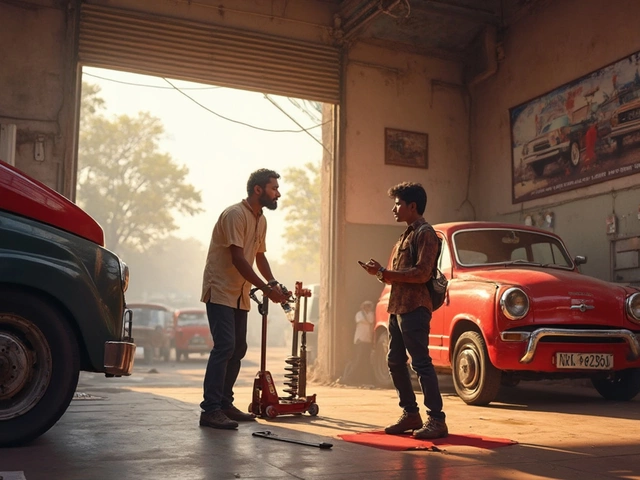You hop in your car on a typical sizzling Adelaide afternoon, start the engine, hit the AC, and all you get is a feeble, lukewarm breeze. Everyone has been there at some point and it never fails to frustrate. Car ACs don't lose their chill instantly; it's usually a slow, sneaky process until one day, you can’t imagine how you ever tolerated it. The good news? You don’t just have to put up with it, or spend a fortune chasing a fix. With the right know-how, you’ll soon have your car’s AC blasting arctic winds once again.
Why Your Car AC Stops Blowing Cold: Getting to the Source
Air conditioning in cars is a simple science wrapped up in a lot of moving parts. The cold air comes from a refrigerated gas (called refrigerant, usually R134a or R1234yf in modern cars). That gas is compressed, cooled, and then released to absorb heat from your car’s cabin. Simple enough on paper, but in reality, a hundred things can trip up this process.
Low refrigerant is the main culprit—it leaks out because of wear or through tiny cracks in hoses and seals. Even a pinhole can mean a slow leak over months. Turns out, over half of AC faults are traced directly to low refrigerant levels. But loss isn’t the only issue. A dirty cabin filter can choke airflow so much that, even with a full AC charge, you’ll barely feel cooled. Filters clog fast in Australia, especially if you do a lot of outback driving or kick up dust on unsealed roads. Replacing a filter can make your AC feel new, and most drivers never do it often enough.
Faulty compressors are another common nuisance. The compressor is that little engine under your bonnet responsible for squeezing the refrigerant. When it gives up, nothing else works right. You’ll often hear a funny noise or feel the AC kick on and off erratically. Modern compressors have smart clutches or variable valves—great when they work, but one faulty wire or a failing bearing and you’re left sweating.
Electronics can also be the bad guy. Sensors, switches, and the control module decide when the AC should work, and if they misfire, even a perfectly healthy AC won’t make cold air. For cars with climate control, a dodgy temperature sensor can feed the wrong data, making your AC cycle endlessly or not engage at all.
Ever noticed your car blowing warm air at traffic lights but ice-cold on the highway? That’s likely the condenser (the radiator-like part right in front of your engine's main radiator) getting hot and refusing to cool, usually because it’s clogged with dirt, bugs, or leaves. This makes a huge difference in efficiency—someone studied Adelaide drivers and found a clean condenser can make cabin air up to 7 degrees cooler on hot days.
Leaks, broken parts, gunked up filters, dead fans—all can stop your AC from giving you that crisp relief. Getting to the true source can be a process, but if you know what to look for, the fixes are usually within reach, or at least less daunting to explain to your mechanic.

Smart Troubleshooting: Step-by-Step to an Ice-Cold AC
So, where do you start if your car AC isn’t cold? Before spending money, run through a logical set of checks. Some fixes are easier than you’d think.
- Check cabin and engine air filters: Pull out the cabin air filter first. If it’s grey, filthy, or crumbling, swap it for a fresh one. It’s cheap and might instantly boost airflow and cooling. A table below shows typical replacement intervals for common models:
| Car Model | Recommended Cabin Filter Change |
|---|---|
| Toyota Corolla | Every 15,000 km |
| Ford Ranger | Every 12,000 km |
| Mazda 3 | Every 15,000 km |
| Hyundai i30 | Every 12,000 km |
- Test the blend door: Turn the temperature dial from cold to hot. If the air stays about the same temp, the interior blend door could be stuck. These little flaps control whether airflow passes through the AC’s heat exchanger—if it’s jammed or the actuator (tiny electric motor) has failed, you’ll never get true cold.
- Listen for the compressor: With the engine running and AC on full blast, stand by the open bonnet. You should hear the distinctive click of the AC clutch engaging. If it never clicks, it might mean low gas, dead fuse, failing clutch, or electrical issues.
- Check AC refrigerant pressure: DIY pressure gauges from auto stores plug straight onto your car’s low-pressure port. If it reads far below normal (usually the green or blue zone), refrigerant is low and you probably have a leak somewhere. Remember, adding refrigerant is a temporary fix while a leak remains. It’s illegal and unsafe to keep topping up without repairs, and leaked refrigerant is a surprisingly nasty greenhouse gas.
- Inspect for leaks: Most leaks leave oily residue around hose joints or the compressor. If you spot greasy patches or dye (additive mechanics often use), you’ve found the problem. UV dye is cheap, and a little kit with a blue light can help you track leaks after adding the dye when you recharge the system.
- Feel for cooling changes as you drive: Does your AC get colder when the car is moving? If so, a cooling fan for the condenser may be dying. These electric fans pull air across the condenser when idling—if they fail, the AC works poorly at traffic lights and recovers at speed.
Some issues like blocked condensers are easy to address—unbolt the plastic shields, spray with a hose from the engine side, and clear out all those stuck grasshoppers, leaves, and dust. Just don’t attack with a high-pressure nozzle or you’ll bend the delicate fins.
Here’s the reality: About 80% of car owners try one or two easy fixes but skip the rest, leaving their cooling system underperforming for years. Taking the time to follow a methodical checklist can make the difference between years of comfortable driving and that ‘rolling sauna’ feeling.

When to DIY, When to See a Pro, and How to Keep It Cold
You’ve checked everything—maybe even cleaned, swapped a filter, and still no relief. Where’s the line between a DIY job and when to call in the pros?
DIY recharge kits tempt many, but caution is needed. Topping off the refrigerant might give you a quick fix, but if you overfill, you risk damaging the compressor or even causing dangerous bursts. Australian law requires refrigerant handling by certified pros, especially for R134a and newer gases. Doing it yourself could mean a hefty fine. If you see metal filings in the old refrigerant oil or hear grinding noises, STOP. That means compressor damage, and the whole system could be contaminated—definitely a job for a qualified shop.
If your car was built after 2017, it might use the new R1234yf gas, which is pricier and needs special tools. Plus, cars with climate control sometimes store error codes. A mechanic with a scan tool can read these and pinpoint what’s wrong in minutes. If you’re still getting only lukewarm air after basic checks, or if the system reverts back to warm after a few days of ‘top up’, the leak is probably large, and an AC technician is worth their weight in gold.
Staying cool long term is all about smart habits:
- Run your AC every couple of weeks, even in winter, to keep seals lubricated and prevent dry-out leaks.
- Park in the shade! The less heat the cabin collects, the easier it is for your AC to work, saving parts from early failure.
- Open all windows for a minute before cranking the AC, letting hot air escape and reducing the load.
- During pollen season, swap out the cabin filter even more often, especially if you have allergies—it’s quick and cheap.
- Get a full AC service and leak check every 3 years, even if it’s working fine; it’s the best way to avoid nasty surprises.
One wild stat: Modern AC tech claims that even a 10% drop in refrigerant can cut cooling performance by a massive 20%. So small leaks add up fast, especially in the brutal Australian summer. Plus, regular AC checks can prevent expensive failures—compressors and condensers are not cheap!
If you’re curious about costs, here’s a breakdown of typical AC service expenses in Australia as of 2025:
| Service Type | Estimated Cost (AUD) |
|---|---|
| Cabin Filter Replacement | $35 - $70 |
| AC System Basic Re-Gas | $180 - $280 |
| Leak Test & Minor Repair | $110 - $200 |
| Compressor Replacement | $700 - $1200 |
Most AC fixes come down to routine care—fixing small leaks, changing the filter, and not ignoring weird sounds or smells. Sometimes it’s as easy as a can of cleaner or a new filter. Other times it’s savvy troubleshooting or calling in a pro. Get these right, and your car will dish out that glorious cold air, ready for whatever the Aussie summer throws at you.




